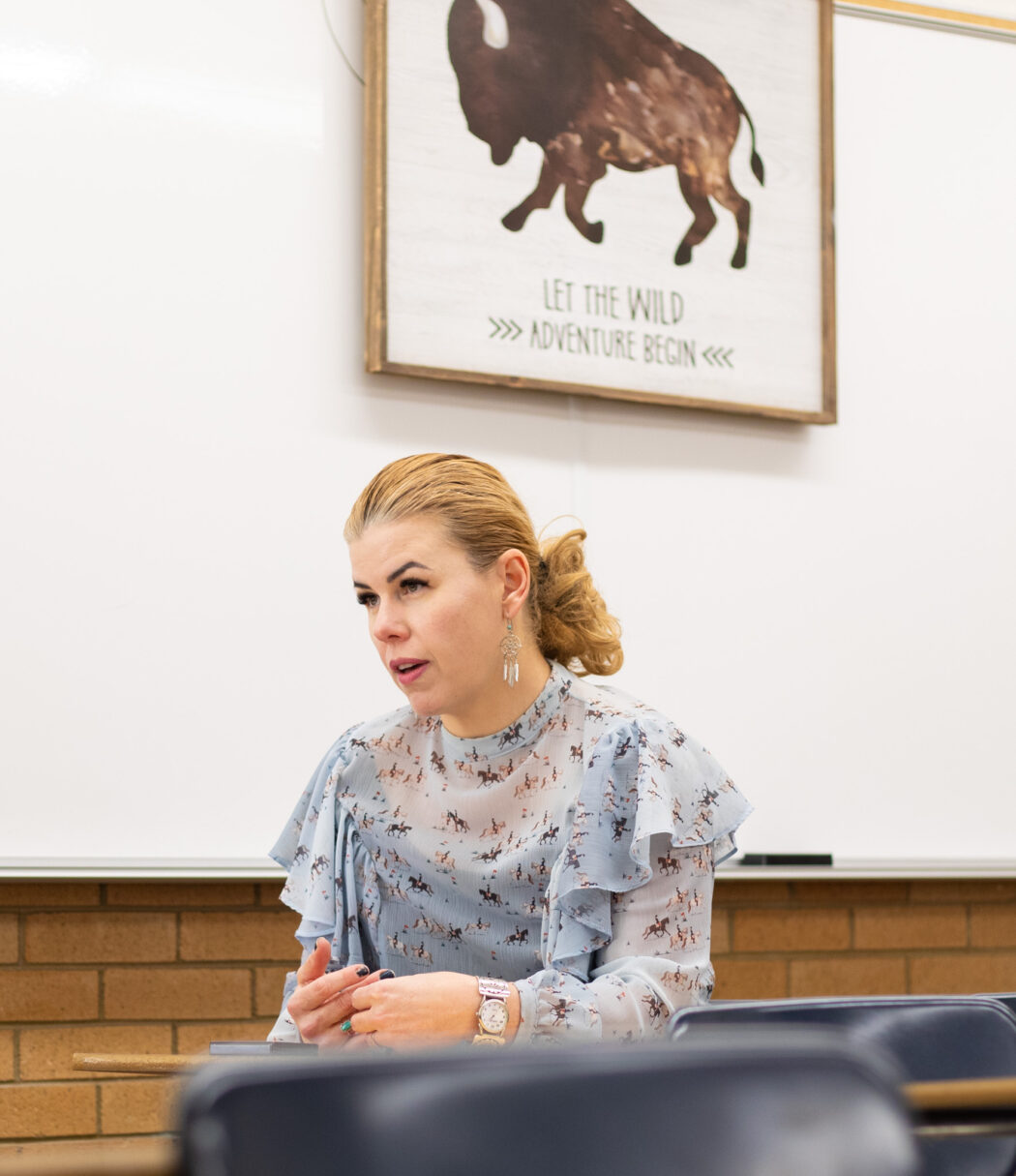Michelle Rossi’s research on non-human marginalized groups
Michelle Rossi is an applied media assistant professor at Utah State University, with 17 years of work within the journalism and PR industries under her belt. Her most recent research has been within the field of environmentalism and media — specifically, animal rights and their representation in the media and her research keyed a unique term: “non-human marginalized groups,” or, animals.
“The question is, what’s the point about having news coverage on human beings and not having animals in the conversation?” Rossi said.
Rossi’s research specializes in the news coverage of farmed animals. She said if there was a “hierarchy of living beings,” farm animals would be on the bottom.
“How does journalism engage with those beings, given that they are at the bottom of the hierarchy?” Rossi said.
Rossi explored a specific instance of how journalism typically engages with non-human marginalized groups in her latest research paper. For this paper, she chose to analyze coverage of animals during the 2020 meatpacking crisis.
When meatpacking plants had to shut down in 2019 due to the coronavirus, many farmers had to kill and dispose of their animals themselves, often by methods of shooting and gassing.
“Media was not even touching on what was going on in terms of animals and animal suffering,” Rossi said.
According to her paper, “Provoking Gut-Level Reactions: A Study on Journalistic Framing During the 2020 Meatpacking Crisis,” journalists were somehow not reporting on the treatment of the farmed animals during this time. They instead relied on indirect accounts of the situation from human voices.
“We didn’t have an accurate picture of what was going on,” Rossi said.
This phenomenon Rossi observed gave rise to her perspective.
“My point was, we need to understand animals as news sources as well,” Rossi said.
Journalists almost always rely on humans as news sources. But Rossi believes animals can be considered as such too.
Rossi said there are many ways in which humans can interact with animals as sources, without relying on verbal communication. People use facial expressions and body movements and sounds; emotions like pain and suffering could be identified through strained cries or eye movements.
“Why not observe the animals themselves?” Rossi said. “Why constrain communication between reporters and sources just because of this written language that we have?”
According to Rossi, she has heard accounts of the animals from farmers or advocacy groups, but still she had the same question. Why not just go get the story from the animals themselves?
Rossi said she is aware this kind of idea requires the testing and questioning of journalistic standards, such as objectivity and accuracy; she believes this is a positive thing.
“I think that this could be a paradigm shift in news production so you can ensure more accuracy to the process,” Rossi said.
In her dissertation, Rossi furthers her argument and explains why the scope of marginalization should be broadened to include these animals.
“What I tried to do with my interviews and analysis was to understand how journalists dealt with the fact that animals can also be understood as a marginalized group,” Rossi said.
Kai Beattie is a senior majoring in journalism and a student of Rossi’s. A majority of his studies have revolved around representation in journalism, and he argues why he believes the representation of marginalized groups in media is so important.
“Well I believe that media is fundamentally a form of communication and acts to both reflect and influence society,” Beattie wrote in an email to The Utah Statesman. “So when media reflects an angle of society that excludes marginalized groups or reduces them merely to the marginal aspects of their identity, it conveys a feeling that those people similarly should be excluded from society at large.”
Rossi found most journalists, when asked to define what a marginalized group is, said they are groups of human beings.
“If you see animals as part of marginalized groups, what happens?” Rossi said. “You’re going to start reviewing your procedures on how you can cover animals.”
Rossi said this is important because it helps people better understand news coverage of marginalized groups as a whole.
Rossi compares it to the era of change the world was experiencing in 2020. It was a time of figuring out how to address certain highlighted issues of the time, such as gender and race. Many businesses and news organizations were rethinking how to more accurately and truthfully represent marginalized groups.
“If we don’t see animals as part of a marginalized group, how can we review our procedures in terms of news coverage on animals?” Rossi said.
Rossi said understanding animals as marginalized groups is important to having equal and honest representation in the media, for all marginalized groups.

